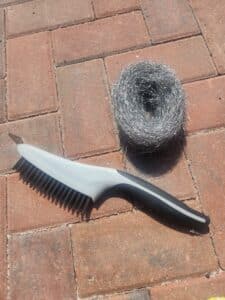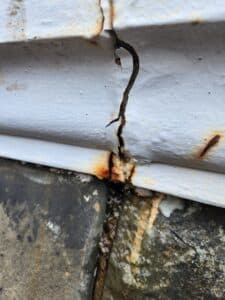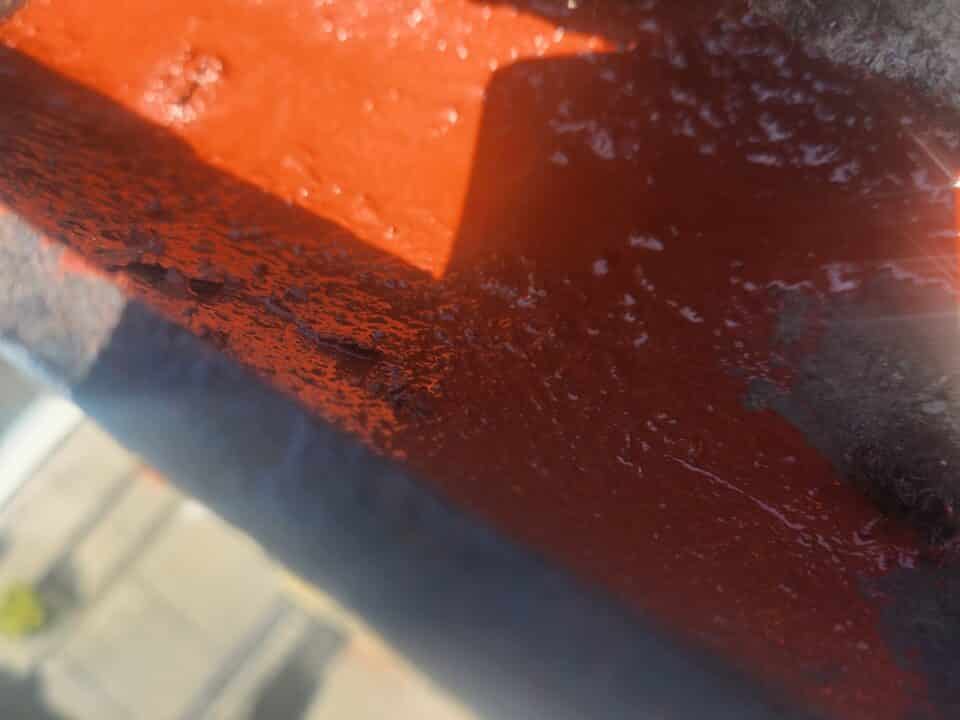Cast Iron Gutter Restoration And Cast Iron Gutter Painting

CAST IRON GUTTER RESTORATION-CAST IRON GUTTER PAINTING AND REPAIRING
Cast iron guttering has a long and rich history that dates back centuries. It has been used extensively in the construction of buildings, particularly in Europe and North America. The use of cast iron for gutters gained popularity during the Industrial Revolution when advancements in iron casting techniques made it more affordable and readily available. In the early days, cast iron gutters were handcrafted by skilled artisans, making each piece unique and intricately detailed before the cast iron gutter painting process begun. They were favoured for their durability and ability to withstand harsh weather conditions. However, as we will go onto discuss; this traditional guttering system is still made to the same qualities and by some of the same iron foundries from past eras. In fact, https://hargreavesfoundry.co.uk/ date back to the 1800s, where an old census mentions there being an iron founder on the exact same site and by the same surname as their current brand today.
As industrialization progressed, the production of cast iron gutters became more mechanized, leading to mass production and wider accessibility. This made them a practical choice for both residential and commercial buildings. There are many brands that continue to design and make their own cast iron guttering in a traditional manner, where each bay will be used to allow moulders to cast the shape of the guttering from molten metal. The difference today though, is that cast iron guttering is made stronger when it leaves the factory than before-this is due to the fact modern science allows destructive and non-destructive testing and chemical analysis in laboratories before they are blasted fettled and ready to pass safety checks for the customer. This should limit the gutter repairs and cast-iron gutter restoration needed, but below we will delve int the reasons such repairs are needed.
Reasons for Perishing of Cast Iron Gutters
Over time, cast iron gutters can experience deterioration and perish. Several factors contribute to this process. One common reason is corrosion. Cast iron guttering is susceptible to rust when exposed to moisture and oxygen for extended periods. The presence of acidic rainwater or environmental pollutants can accelerate the corrosion process, leading to the formation of rust and eventual weakening of the gutter system. Oxidation is a chemical reaction that occurs when a substance reacts with oxygen. In the context of cast iron, oxidation refers to the process of iron combining with oxygen from the surrounding environment to form iron oxide, commonly known as rust. Cast iron is particularly susceptible to oxidation because it contains a high percentage of iron. The oxidation of cast iron (rust) occurs more readily in the presence of moisture or water. This is because water helps facilitate the transfer of oxygen to the iron surface, promoting the formation of iron oxide. Therefore, cast iron gutters exposed to rain, high humidity, or other sources of moisture are more prone to rusting. The very fact gutters are designed to carry rain water means that over time repairs will be needed, and we personally find this is often where the bolts are attaching the guttering together.
The process of rust formation involves several steps. First, iron atoms on the surface of the cast iron react with oxygen to form iron(II) oxide (FeO). This initial reaction is often not visually apparent. However, if moisture is present, the iron(II) oxide can further react with oxygen to produce hydrated iron(III) oxide, commonly known as rust. Rust has a characteristic reddish-brown colour and is a brittle material that flakes away, exposing more iron to the oxidation process.
Another factor that contributes to the deterioration of cast iron gutters is the expansion and contraction caused by temperature fluctuations. These thermal movements, combined with the weight of the gutter and external stressors such as snow or ice accumulation, can lead to stress cracks and the development of leaks. Thermal expansion is the tendency of a material to expand or contract in response to changes in temperature. It occurs due to the increased kinetic energy of the atoms or molecules within the material when heated, which leads to greater spacing between them. Cast iron, including the type commonly used for gutters, is known for its relatively high coefficient of thermal expansion. The coefficient of thermal expansion (CTE) is a measure of how much a material expands or contracts per degree of temperature change. Cast iron typically has a CTE of around 10-12 x 10^-6 per degree Celsius (μm/m°C), which means it expands significantly with increasing temperatures.
As mentioned, the areas of cast iron gutters that are most prone to leaks include the joints, seams, and connections. Over time, the constant exposure to water and environmental elements can cause the gutters to lose their effectiveness. Additionally, the screws and fasteners used to hold the gutter sections together can corrode or loosen, resulting in gaps and potential leakage points. Below we will consider the process of cast iron gutter restoration.
Restoration Process of painting Cast Iron Gutters

Restoring cast iron gutters involves a series of steps to repair, protect, and enhance their longevity. The process typically begins with a thorough inspection of the gutter system to identify areas of damage, leaks, or weak points. This inspection helps in determining the extent of restoration required and enables planning for the necessary materials and tools.
Once the inspection is complete, the first step in the restoration process is to address any leaks or gaps in the gutter system. There are various gutter materials that can be used to fix a cast iron gutter repair depending on the severity of the damage, and we will go through them one at a time, however it is noted by the http://www.mgma.co.uk/ that damage “necessitates the removal of jointing bolts and separating the sections” for a long term repair. This is often started by applying a suitable sealant or putty to seal the joints and connections once they have been removed and cleaned up. High-quality silicone sealants are commonly used, as they provide flexibility and excellent water resistance but that alone won’t be enough to stop long term cast ion gutter leaks.
After sealing the leaks, the next step involves preparing the surface of the gutters for painting. The gutters would have already been emptied to allow access to them for the above, and now any loose paint on the outside is stripped back with a wire brush and grit cloth. It is important to ensure a clean and smooth surface for proper adhesion of the subsequent layers. To protect the insides of the cast iron gutters, a layer of bitumen paint is applied. Bitumen paint acts as a waterproof coating, providing additional protection against moisture and rust.
The final step in the restoration process is to apply a coat of suitable exterior paint. This paint helps to further protect the gutters from corrosion and adds a finishing touch to the overall aesthetic. It is important to choose a paint specifically formulated for metal surfaces, ensuring durability and long-lasting results. We always use solvent based paints for gutters as this will provide a tough finish and is also easier to clean, but the preparation is very important for this paint as it can become brittle with age.
VARIATIONS IN CAST IRON GUTTER REPAIR WORK

On occasion, the previously mentioned bolts that interlock the sections of cast-iron are the main cause for leaks and when this happens it is very important to not only remove them but also to replace them. On old cast iron guttering, the unions or connectors are usually fixed with a putty and over time these connections have become rigid and brittle, making removal quite hard. If they do not come off then an angle grinder can be used to separate the sections and tap the gutter bolts out. These can be replaced with a like for like equivalent and set in place with the afore mentioned sealant or a fibre glass kit if there is surrounding damage.
Fibreglass epoxy mix can be used to repair areas that are larger in size, but this can also be used as the putty for the previously mentioned small leaks. Some products suggest it is spread on with a brush and it is often kneaded before use. A putty knife is also commonly used to spread over affected areas and done so with a building up of layers, so that the area isn’t so thin that subsequent leaks will happen again. This allows us to work fast, due to the quick drying time and the fact it sets rock solid. Larger holes in down pipes for example should be replaced but if the customer chooses not to do this then we can apply waterproof pipe tape and epoxy over the damaged area, to create a sealed area. At some point in time this might need a permanent replacement but so far this option has worked very well for us.
Our other blog covering the difference between cast iron gutter and upvc gutter systems supports some of the arguments for each system in more detail, and our home page www.fifewindowcleaningservices.co.uk lists our main services In Fife and Scotland as a whole.


